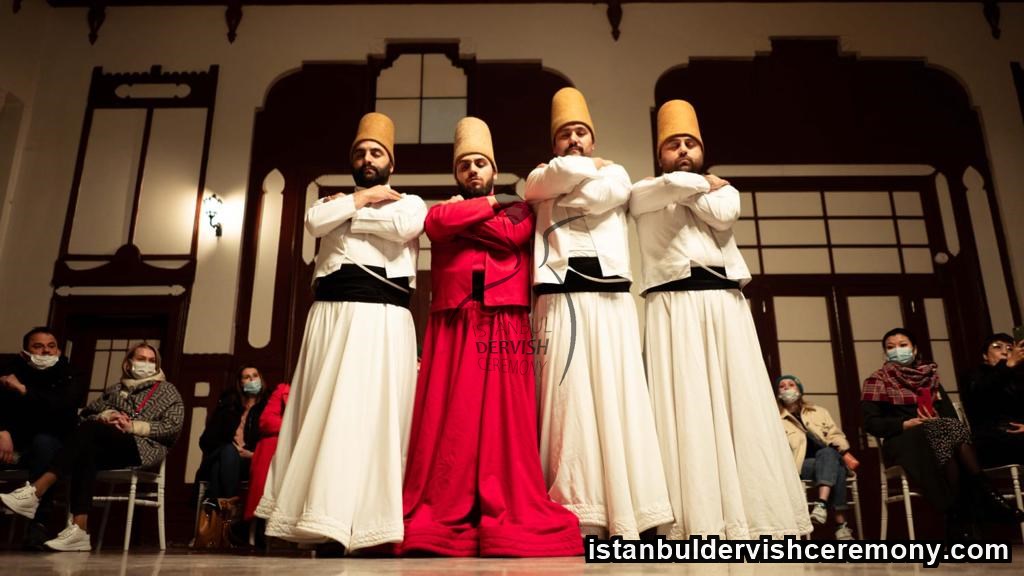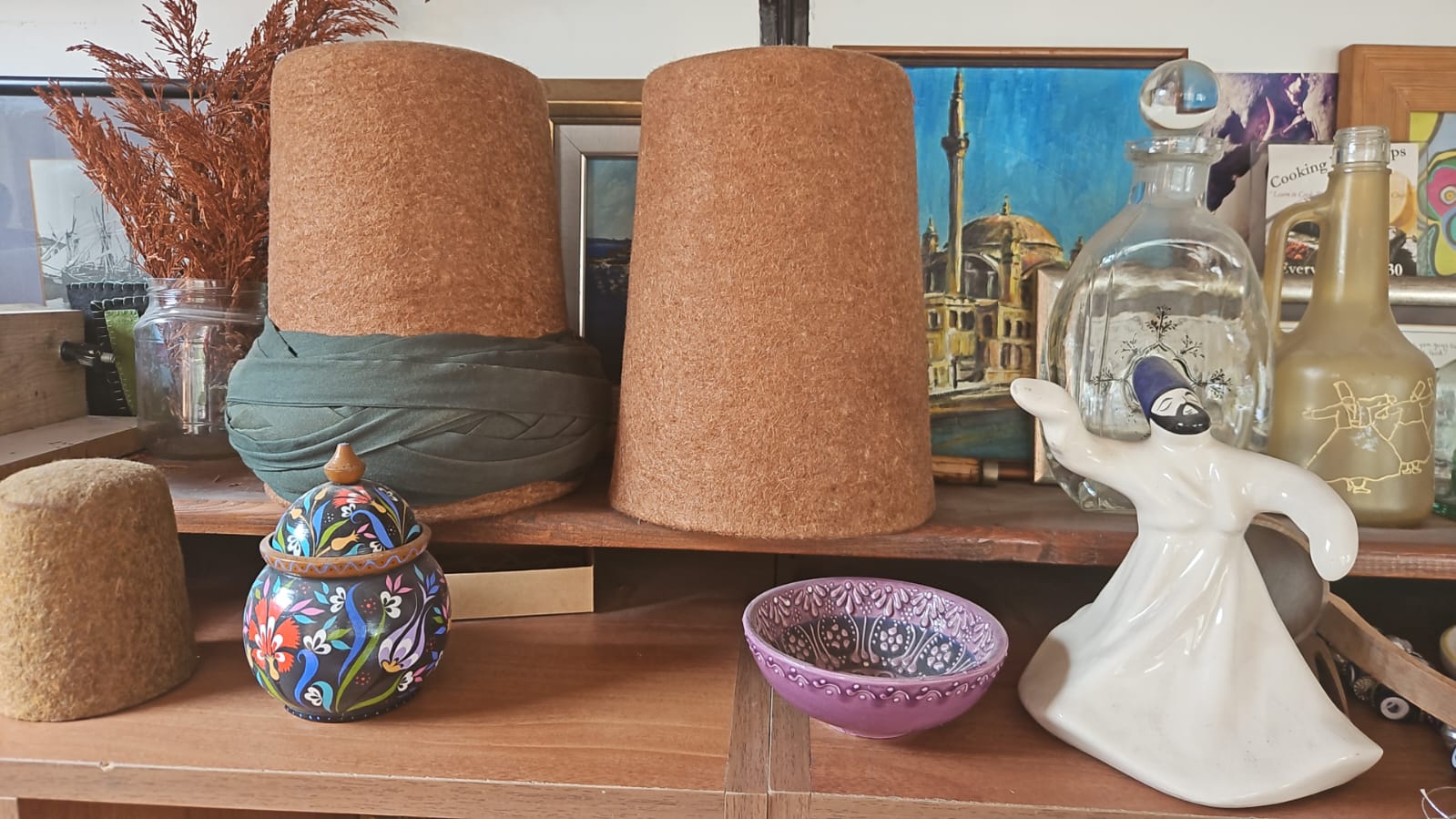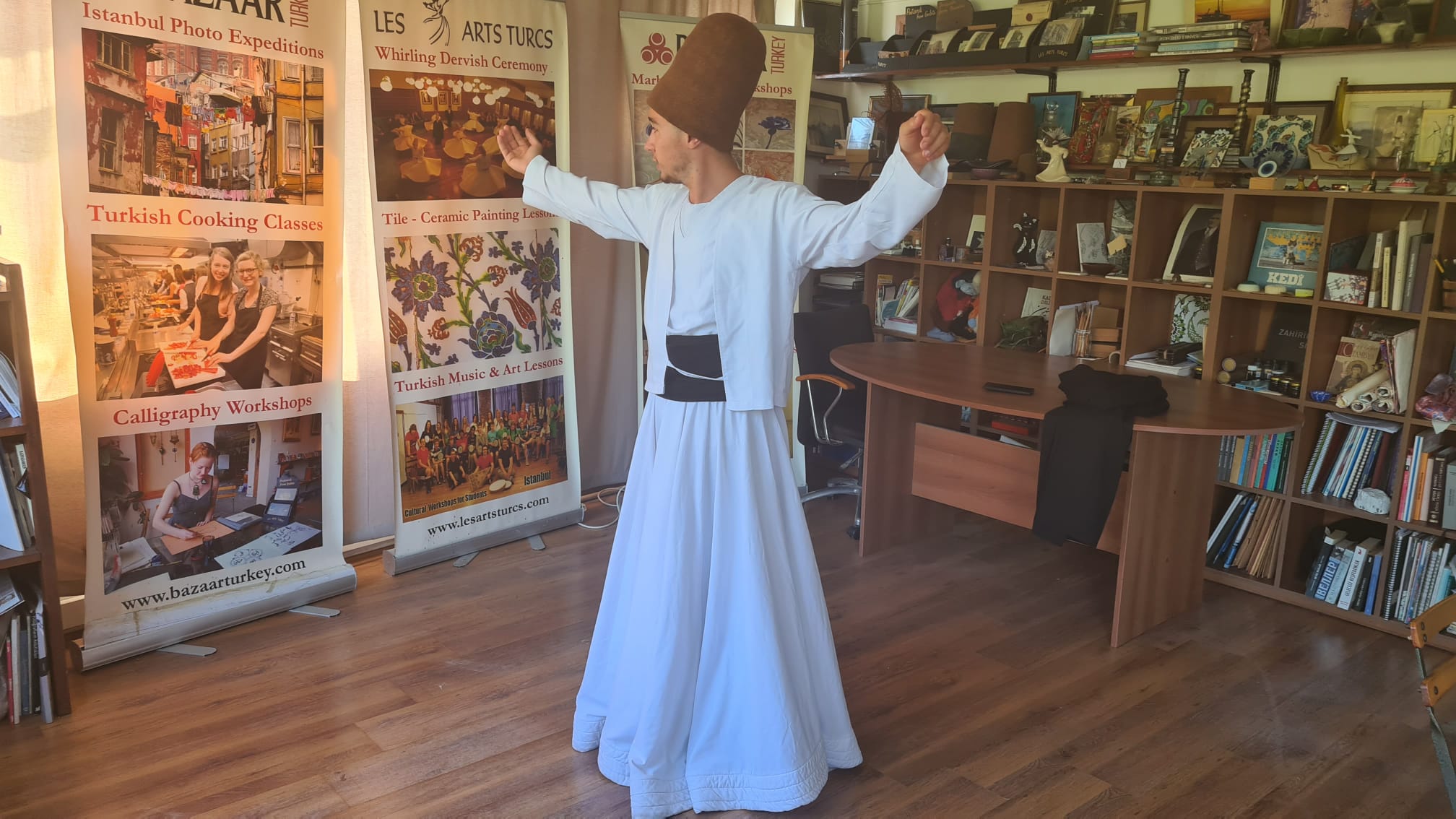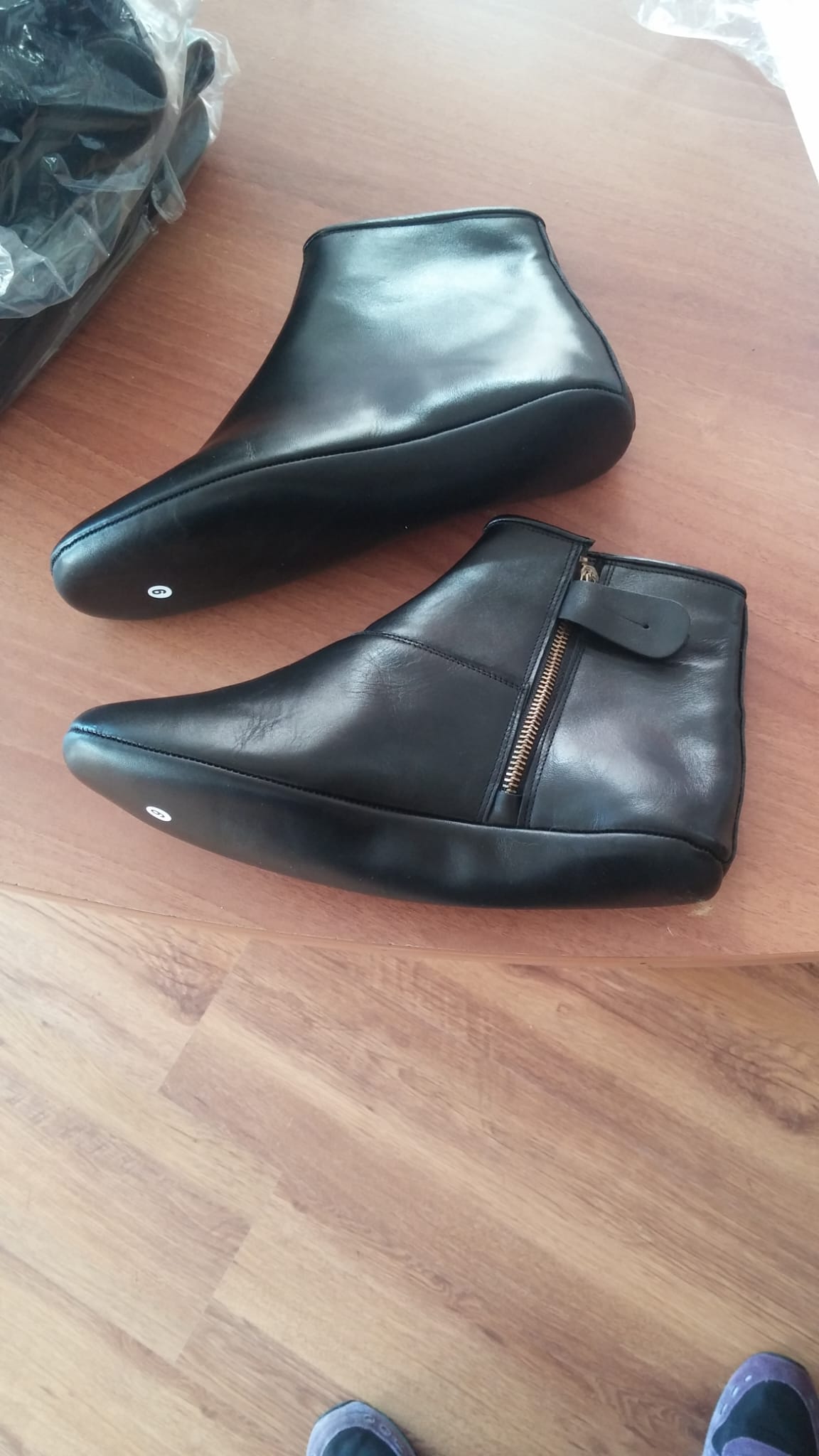Description
Tailor Made Whirling Dervish Dress Costume
Specially Made Whirling Dervish Outfit For Chıldren And Adults Of All Ages And All Weights.
We Tailor made Dervish clothes. You will send us your measurements and we can prepare and ship it to your address with DHL worldwide or you can pick up your dervish outfit from our art center in istanbul. You can order a full set with Hat, dress, shoes or order pieces you want.
Please contact us for Prices.
LOCATION of our culture center in Sultanahmet :
Google Maps : https://goo.gl/maps/uXuyRmELZsx
Contact People : Mr. Alp – Mr. Nurdogan
( Phone : +90 544 220 10 22 / +90 212 527 68 59 )
Istanbul Dervish Ceremony – Les Arts Turcs / Culture Center
Alemdar Mh. Incili Çavus St.
No: 19 Floor : 3 (Behind The Underground Cistern)
Sultanahmet 34400
Istanbul, Turkey
Sufi Dervish dress , Semazen Dress , mevlana Rumi trance music costume.
Real Handmade Original Sufi Whirling Dervish Original Turban Hat made of Felt.
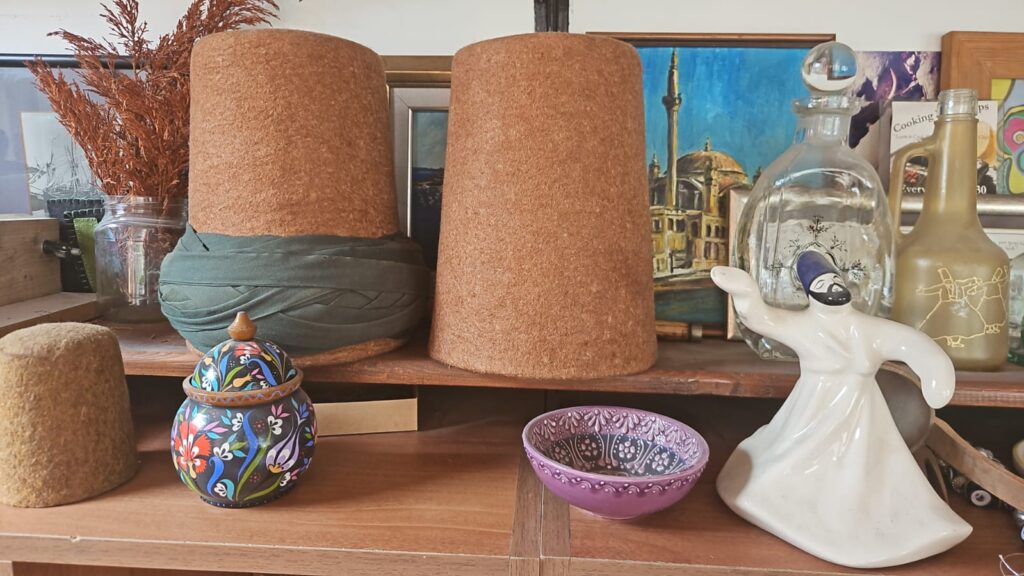
Sikke
The Mawlawī people are wearing a special hat called “sikke” on their heads. Just as the sultans have crowns, the sheikhs have sikke. While the crown of sultans symbolizes the material power, the Mawlawī sheikh’s sikke represents the spiritual power. Thoug cardigan and “sikke” are not indispensable conditions of true dervish, but in lodge’s life these clothes are traditionally an important part of the rituals. Sheiks and dervishes do not wear their Daily crowns in ceremonies. The crowns that used in ceremonies and special occasions are much more valuable. Of course, a sheikh’s crown is more valuable than a dervish’s crown as “sikke” has been given to sheikh for sincerity and success of in the spiritual journey. Dervishes do not leave the crown everywhere, but they keep it in their special place
Sikke is a two-layered, dark brown, honey-colored or white, beaten wool cone, approximately 45 to 50 centimeters long. The upper part was a little narrower than the lower part.
In the beginning, the sikke were thick at the bottom, pointed at the top, and without a mould. Recently, the sikkes have become shorter in length and reduced to the length at the top, and the felt has also become thinner and resembled a fez. The coins were gummed, molded, ironed and made shiny.
Mevlevis wear the net called elifî, a shalwar that is slightly wider than the trouser net, a thin shirt with a collar that is one finger wide and narrow sleeves that button up from the left side to the waist or go down to a little below the waist. This shirt is sleeveless, collarless, but in the places that come to the shoulders, in a way that covers the top of the shoulders and gradually. An open-fronted vest (Hayderî, Hayderiyye) that becomes narrower and comes down to the waist, and on top of all of them, there is no collar, and on the sides from the neck to the chest, there are usually twelve machine stitches as a sign of the Twelve Imams, or eighteen machine stitches, which are the sacred numbers of the Mevlevis, and they are called cardigans. They wore a plain, waistless overcoat that was as long as
The machine stitches on the collar of the cardigan take the following shape at the back;
This was an outdoor outfit, and compared to other sects, this outfit had no special features other than the coins, the number of stitches of the cardigan, and the shape on the back. There were branch coins on the head. Sheikhs also wore coins without a dastar if they were not participating in a ceremony. Recently, even if there was a ceremony, the grandfather next to the sheikh would carry the destarh coin in a case, and when it was necessary, the sheikh would take off the coin on his head, put it on, and put the coin he took out into the case. Sheikhs also wore dal sikke in the lodge on days other than the mukabele.
Among the Mevlevis, there were no buttons or buttons on the inner and outer clothes, and in places where they would be closed, mutual rope-like parts made of the same fabric were tied together.
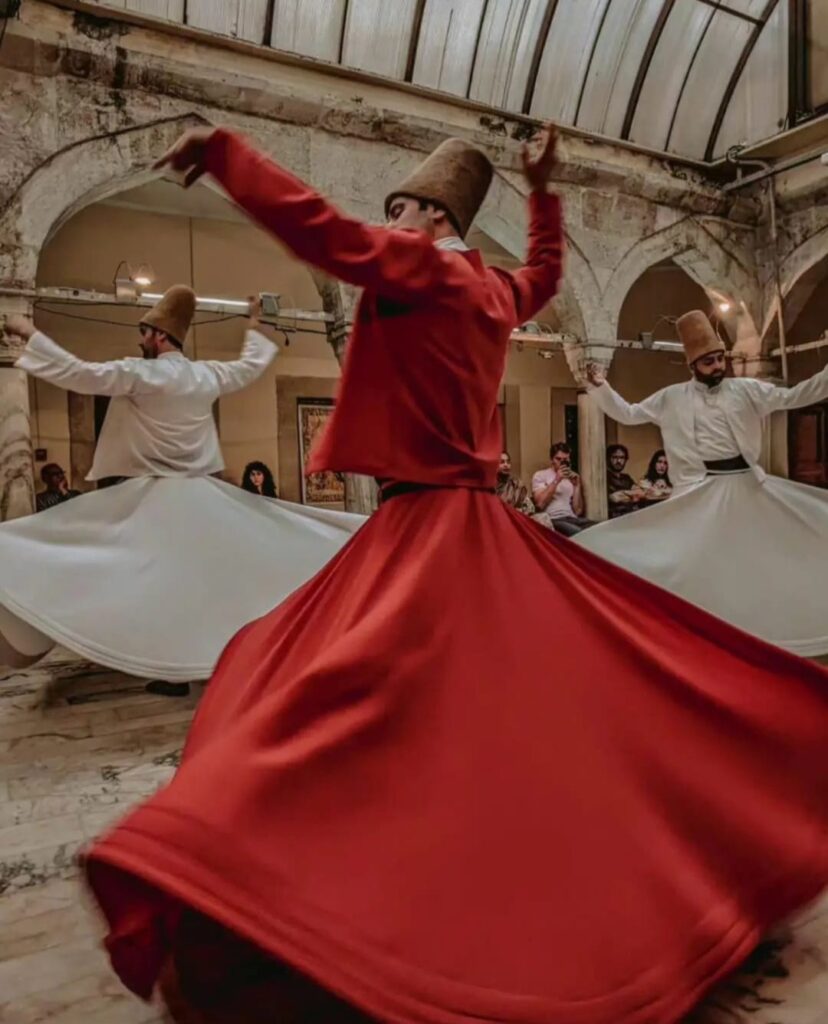
Tennure
This dress, which was also found among the Kalenderi, Hayderîs and ancient Bektashis, was sleeveless, collarless, open to the chest, narrow at the waist, and gradually widened from the waist down. Their skirts were incomparably wider than their tops and consisted of six pieces. A thick, woolen piece, four fingers wide, was sewn from the inside to the skirt part. This dress, called the sema’ tennure, becomes colorful and often white, and when the sema’zen begins the sema, the part below the waist, which is tightened with the elif nemed, opens and the skirt, which opens with a slight turn, now controls the sema’zen, the sema’zen, as it were, with her. warned of his return. The tennure, called service tennure and worn by the kitchen servants until the end of the ordeal period, was shorter than the sema’ tennure, that is, it extended to the feet and its color was generally black.
Tennure was similar to the inverted form of the letter lamelif in the Arabic alphabet. The person wearing it looked like an alif drawn to the middle of the letter, thus taking the form of an inverted ‘La’, that is, ‘Illa’, which is the nefiy in the phrase ‘There is no worship except Allah – La ilahe illallah’, meaning ‘La’, meaning to ignore. » was considered as a sign of «illa», which expresses the meaning of making its existence known. It was a sign that the Mevlevi knew that all forms of existence other than absolute existence were non-existent, and that he negated them along with their own existence, and that they all proved that there was a manifestation of absolute existence and that there was only one being.
Elif nemed
In the Mevlevis, this word was said in the style of “Eliflamet”. It is similar to the letter “alif” in the Arabic alphabet, long, mustatili, four fingers wide, pointed at both ends to form a triangle, covered with plain wool fabric on the inside, with a relatively thin fabric on top, with a darker or lighter color on the edges compared to the background color. It was a belt made of cloth, about one and a half meters long. It would be wrapped around the waist, over the tennure, towards the left, and the end that was slightly on the left side of the body would overlap the other part. There was a long strip sewn onto this end. This strip was wrapped around the waist from the middle and top of the belt, and its end was tightly inserted into the wrapped part, thus the elifî nemed was tied with this strip.
Destegul
It was a narrow vest made of thin fabric, with narrow and unbuttoned sleeves, almost Japanese in places where the arms were attached to the body, open at the front, reaching up to the waist and reaching half of the Elifî nemed compared to the dye. In the front, on the left side, there was a finger-long strip of the same fabric, which was inserted in the alif neme, so that the left side of the bundle-rose, which was fixed in the alif fi neme, was not opened, since the sema was towards the left.
Hirka
This top, also called “official cardigan” meaning ceremonial cardigan, has sleeves of seventy centimeters wide and a length of more than one meter, with an open front and no collar. It was a very wide, waistless costume that reached all the way to the feet. On the collar, a long dark green strip with a width of one finger or narrower, which was also bent in shape, went down from the side of the collars to the skirt and covered the skirt from top to bottom, which was called “stiva”.
Dervishes would wear the cardigan, which was usually black and made of woolen, linen, or even sophisticated fabric depending on the season, behind their backs. They could not wear their arms, they would fold their front with their hands from the inside. They would only wear their sleeves during prayers, holidays or other ceremonies and when meeting. As soon as the prayer or ceremony was over, they would remove their arms. Sheikhs always wore their sleeves. A picture cardigan could not be worn without a coin.
